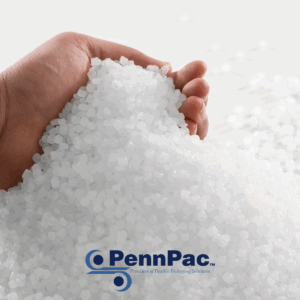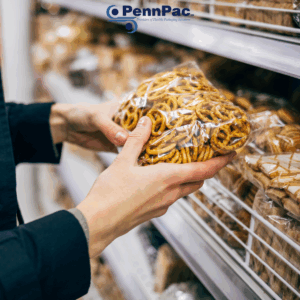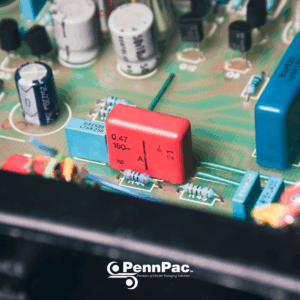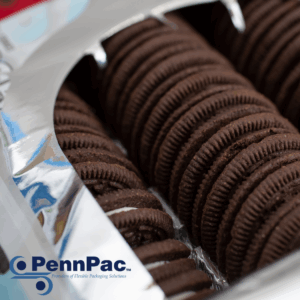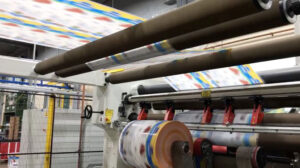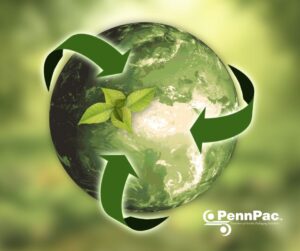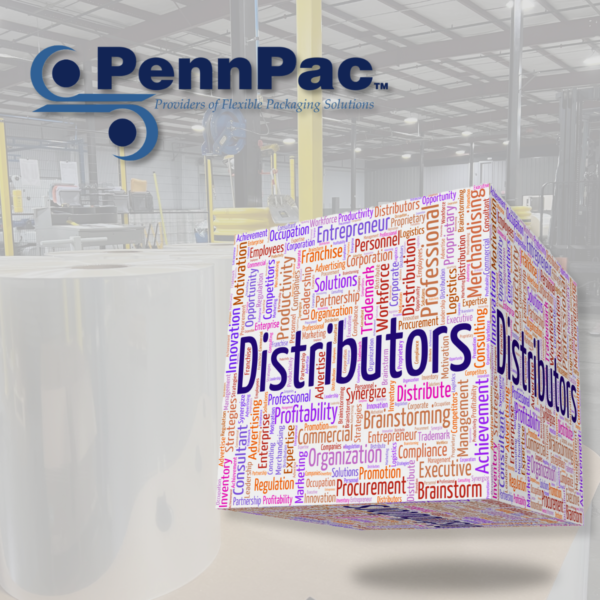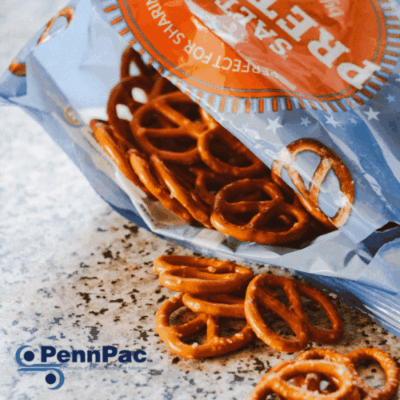
Key Takeaways
- BOPP films offer exceptional clarity and strength. Thus, making them ideal for various packaging needs.
- They provide an effective moisture barrier, essential for food preservation.
- BOPP films are cost-effective and versatile. Which, makes them suitable for industrial and printing applications.
- Advancements in BOPP technology are leaning towards more sustainable and eco-friendly solutions.
Table of Contents
- Understanding BOPP Films
- BOPP in Food Packaging
- Industrial Applications of BOPP Films
- BOPP Films for Printers
- Advantages of Using BOPP Films Across Applications
- Future Trends in BOPP Film Applications
- Conclusion
- Additional Resources
Understanding BOPP Films
Definition and Composition
BOPP films are a type of polypropylene film that has undergone a process called biaxial orientation. Meaning that, the film is stretched in both the machine direction (MD) and the transverse direction (TD). This stretching enhances both the clarity and strength of the film, making it a preferred choice for many applications.
Polypropylene is a polymer made from the polymerization of propylene gas. The chemical structure of polypropylene contributes to its toughness and flexibility. Biaxial orientation not only strengthens the film but also improves its clarity. Ultimately, making BOPP films visually appealing for packaging.
Key Properties
BOPP films possess several key properties that set them apart from other materials:
- High Tensile Strength: This makes the films durable under stress. BOPP film can withstand impact without tearing.
- Excellent Clarity: The transparency of BOPP films allows consumers to view contents easily.
- Moisture Barrier: BOPP films provide a significant barrier to moisture, which is essential for food preservation.
- Heat Sealability: This property allows the films to be sealed tightly. Thus, making BOPP film ideal for food packaging applications.
- Chemical Resistance: BOPP films resist a variety of chemicals, allowing them suitable for industrial settings.
These key properties showcase how BOPP films are suitable for various applications.
Manufacturing Process
The manufacturing process of BOPP films starts with the extrusion of polypropylene resin. Here’s a breakdown of the process:
- Extrusion: Polypropylene resin is melted and extruded through a die.
- Biaxial Orientation: The film is then stretched in both the machine direction and transverse direction. This process aligns the polymer chains and enhances the mechanical properties of the film.
- Cooling: After stretching, the film is cooled rapidly. This helps cure its properties and prevent shrinkage.
- Winding: Lastly, the extruded film is wound onto cores so it is ready for conversion.
The precise control during this process ensures uniform film thickness and quality. For further insight into BOPP Film, check out Versatile BOPP Film, Flexible Packaging Films for Food & Beverage, and BOPP Films: The Ultimate Solution in Flexible Packaging.
BOPP in Food Packaging
Critical Application Overview of BOPP Film
Food packaging BOPP films are critically relevant in preserving food quality and extending shelf life. The ability of BOPP films to maintain product freshness is essential for manufacturers and consumers alike.
BOPP films act as a moisture barrier, preventing water vapor from entering or escaping packaging, which can spoil food products. This capability makes BOPP films a popular choice in various food packaging applications.
Common Food Products Packaged with BOPP Film
BOPP films are employed to package a variety of food items, including:
- Snacks: BOPP films are used for potato chips and snack bars, maintaining their crunchiness and flavor.
- Confectionery: Candies and chocolates are often wrapped in BOPP films to prevent moisture ingress and prolong shelf life.
- Baked Goods: BOPP films protect baked items like bread and pastries, ensuring they remain fresh and appealing.
- Fresh Produce: Fruits and vegetables are often packaged in BOPP to retain moisture and improve shelf-life.
These examples illustrate the versatility and effectiveness of BOPP films in keeping food products fresh and appealing.
Benefits of BOPP Film in Food Packaging
BOPP films offer several benefits for food packaging:
- Moisture Resistance: They protect food items from moisture, thus extending shelf life.
- Oxygen Barrier Properties: BOPP films prevent oxygen from entering the packaging, which can spoil food.
- UV Protection: They can block harmful UV rays, preserving the quality of light-sensitive products.
- Aesthetic Appeal: BOPP films have a high gloss finish and excellent printability, making products look attractive on shelves.
For more information on these benefits, refer to Food Safety in Flexible Packaging Films.
Sustainability and Safety
Safety is paramount in food packaging! All PennPac films are compliant with food safety regulations, ensuring they are safe for food contact.
Additionally, there are recyclable and biodegradable BOPP film options available. Of which, cater to the growing demand for sustainable packaging solutions.
Sustainable packaging is becoming increasingly relevant. Furthermore, BOPP films are leading the way in providing options that reduce environmental impact.
Industrial Applications of BOPP Film
Overview of Industrial Uses
Industrial BOPP films are widely used in sectors such as textiles, electronics, and labeling. These films play a crucial role in providing durability and versatility in demanding environments.
Textiles Industry
In the textiles industry, BOPP films are often used as coatings or laminations. This enhances the durability of fabrics while providing moisture resistance. All of which, make the final product more robust.
Electronics Industry
BOPP films find significant use in the electronics industry. They serve as insulation and protective layers for electronic components, ensuring reliability and performance under challenging conditions.
Labeling and Printing
BOPP films are also essential for producing labels that require durability and resistance to wear, moisture, and chemicals. These films ensure that labels adhere well and remain visible over time. Thus, making them ideal for industrial and consumer applications.
Benefits in Industrial Settings
In industrial environments, BOPP films have proven to be durable, versatile, and cost-effective. Films are suitable for various applications and ensure reliability and quality.
BOPP Film for Converters
Importance in the Printing Industry
BOPP film can achieve high-quality print results. The clarity and surface properties allow for vibrant and sharp images, enhancing package designs.
Applications in Printing Processes
BOPP films are utilized across various printing processes such as:
- Flexographic Printing: Ideal for large-volume printing. BOPP films perform well due to a smooth surface.
- Offset Printing: Offers high-quality images and is widely used for consumer packaging.
- Digital Printing: Enables customization and quick turnaround. Of which, offers design flexibility without large scale commitment.
Advantages for Printing
BOPP films offer distinct advantages, including:
- Excellent Ink Adhesion: Ensures labels and packaging retain vibrancy over time.
- Resistance to Smudging and Fading: BOPP films maintain their appearance and quality, especially when part of a laminated structure.
- Vibrant, Sharp Images: The clarity of BOPP films enhances the overall presentation.
Compatibility with Printing Technologies
BOPP films are compatible with various printing technologies, including digital and traditional methods. However, it is essential to follow specific handling and processing requirements to achieve optimal results.
Advantages of Using BOPP Films
Cost-Effectiveness
BOPP films offer a cost-effective solution, when compared to alternative materials like PET and PVC. Lower production costs and economic scalability make BOPP films an attractive choice for manufacturers.
Performance Reliability
BOPP films demonstrate consistent performance in different applications, ensuring reliability and quality over time. Such durability reduces the need for frequent replacement.
Sustainability Aspects
The environmental benefits of BOPP films are noteworthy. Advances in biodegradable BOPP films and recycling initiatives illustrate the industry’s commitment to sustainability.
For more on sustainability, visit Benefits of BOPP Films for Cost-Effective Packaging Solutions.
Future Trends in BOPP Film Applications
Innovations in BOPP Film Technology
As the industry continues to evolve, recent advancements in BOPP film technology include improved barrier properties, enhanced mechanical strength, and specialized coatings for diverse applications.
Sustainability and Environmental Considerations
The BOPP industry is increasingly focusing on sustainable materials. Enhanced efforts towards biodegradable BOPP films and effective recycling initiatives are paving the way for eco-friendly solutions.
Emerging Applications
Future applications for BOPP films are poised to expand into industries like pharmaceuticals and cosmetics. The superior barrier properties of BOPP films can meet the specific needs of these markets effectively.
Technological Integration
The integration of BOPP films with smart technologies, such as RFID tagging and interactive packaging features, is on the rise. This technology enhances packaging functionality and consumer interaction.
Market Growth and Opportunities
The projected market growth for BOPP films indicates emerging opportunities in global markets. Their widespread application across different sectors will likely drive innovation and demand.
Conclusion
In conclusion, BOPP film applications play a vital role in modern industries. Offering benefits such as durability, cost, and performance enhancement. Their applications in food packaging, industrial settings, and printing highlight their importance in providing effective solutions.
Contact PennPac to discuss BOPP Flexible Packaging Film applications.
Additional Resources
Related Articles and Studies
To gain more in-depth information regarding BOPP films, consider exploring the following PennPac resources:
- Versatile BOPP Film
- Flexible Packaging Films for Food & Beverage
- BOPP Films: The Ultimate Solution in Flexible Packaging
FAQ Section
-
What are the environmental impacts of BOPP films?
BOPP films have a relatively low environmental impact compared to other packaging materials. They are recyclable and there are ongoing developments in biodegradable variants to further reduce their ecological footprint.
-
How do BOPP films compare to other packaging materials?
BOPP films offer superior clarity, strength, and moisture resistance compared to materials like PET and PVC. They are also more cost-effective and versatile for various applications.
-
Can BOPP films be recycled?
Yes, BOPP films can be recycled. Many recycling programs accept BOPP, and advancements in recycling technologies are making the process more efficient and widespread.
By understanding the applications and advantages of BOPP films, industries can make informed choices that enhance their products and services.

